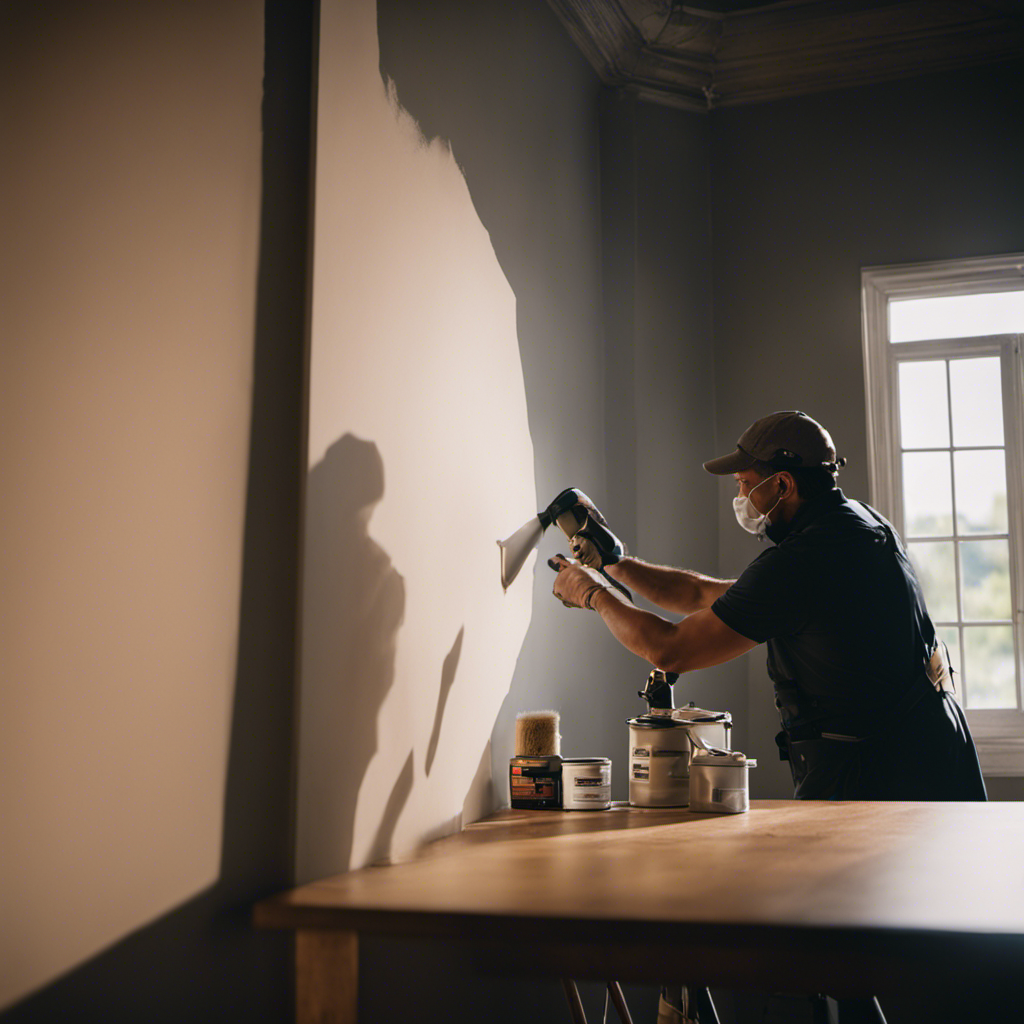Phone:
(701)814-6992
Physical address:
6296 Donnelly Plaza
Ratkeville, Bahamas.
40 Years still going strong
40 Years still going strong

Are you looking to achieve a flawless painting finish in York? Look no further! In this article, we will share with you 5 essential surface preparation tips to help you achieve the best results.
From cleaning and repairing the surface to priming and sealing it, we’ve got you covered.
We’ll also guide you on how to sand and smooth the surface for that perfect finish.
Get ready to transform your space with these expert tips!
Before you begin painting, it’s crucial to understand the importance of properly preparing the surface. Surface preparation techniques play a vital role in achieving a flawless painting finish. By taking the time to prepare the surface adequately, you can ensure that the paint adheres properly, leading to a longer-lasting and more durable finish.
Proper surface preparation involves several steps, such as cleaning the surface to remove dirt, dust, and grease, repairing any cracks or holes, and sanding to create a smooth and even surface. The benefits of proper surface preparation are numerous. It helps the paint to adhere better, reduces the risk of peeling and cracking, and ensures a more professional-looking result.
To ensure a smooth and efficient surface preparation process, you should frequently use the right tools and equipment. Here are three essential tools you need for effective surface preparation:
Remember to wear appropriate safety precautions like gloves and goggles when using these tools.
Now that you have the right tools, let’s move on to the next step: cleaning and repairing the surface.
You can start by inspecting the surface for any dirt, dust, or imperfections that need to be cleaned or repaired. Surface cleaning is crucial for achieving a flawless painting finish. Use a mild detergent or a specialized surface cleaner to remove any grime or grease. Scrub the surface gently with a soft brush or sponge, and then rinse it thoroughly with clean water. Allow the surface to dry completely before moving on to the next step.
Next, assess the surface for any repair needs. Look for cracks, holes, or damaged areas that may affect the smoothness of the paint finish. Use a suitable filler or spackle to fill in these imperfections. Apply the filler using a putty knife and smooth it out evenly. Once the filler is dry, sand it down gently to create a smooth and even surface.
Incorporate the following table to summarize the steps in surface cleaning and repair:
| Step | Action |
|---|---|
| 1 | Inspect the surface for dirt, dust, and imperfections |
| 2 | Clean the surface using a mild detergent or specialized cleaner |
| 3 | Rinse the surface thoroughly with clean water |
| 4 | Allow the surface to dry completely |
| 5 | Assess the surface for cracks, holes, or damaged areas |
| 6 | Fill in imperfections with a suitable filler or spackle |
| 7 | Smooth out the filler with a putty knife |
| 8 | Sand the filled areas to create a smooth surface |
Now that the surface is clean and repaired, you are ready to move on to the next step of priming and sealing the surface.
To ensure proper adhesion and a long-lasting paint job, apply a coat of primer and seal the surface before you begin painting. Here are some tips to help you with this crucial step:
By following these steps, you’ll ensure that your painting project starts off on the right foot.
Now, let’s move on to the next step: sanding and smoothing the surface.
To achieve a flawless painting finish, sand the surface to smooth out any imperfections and create an even texture. Start by using sandpaper with a grit appropriate for the surface material.
For wood, start with a coarse grit (around 80-100) to remove any roughness or old paint. Move on to a finer grit (around 120-150) to further smooth the surface.
For metal or plastic, start with a medium grit (around 120-150) and gradually move to a finer grit (around 220-240) to achieve a smooth surface.
When sanding, use even pressure and make long, smooth strokes. Always sand in the direction of the wood grain or surface texture.
After sanding, wipe the surface clean to remove any dust or debris before applying paint or primer.
You may want to skip surface preparation, but it’s not recommended for a flawless painting finish. Skipping can lead to paint peeling, uneven surfaces, and wasted time and money.
You don’t need to buy expensive tools for surface preparation. There are alternative options you can use at home. Look for budget-friendly solutions to achieve a flawless painting finish in York.
To achieve a properly prepared surface, use cleaning products specifically designed for the job. Don’t skimp on this step, as surface preparation is crucial for achieving a flawless finish in your painting project.
It is necessary to repair all surface imperfections before painting. Overlooking imperfections can affect the final result. Take the time to properly prepare the surface by repairing any flaws for a flawless painting finish.
For a flawless painting finish in York, it’s important to choose the right primer and sealer for different surfaces. Not all types will work effectively. Consider the specific needs of each surface when making your selection.